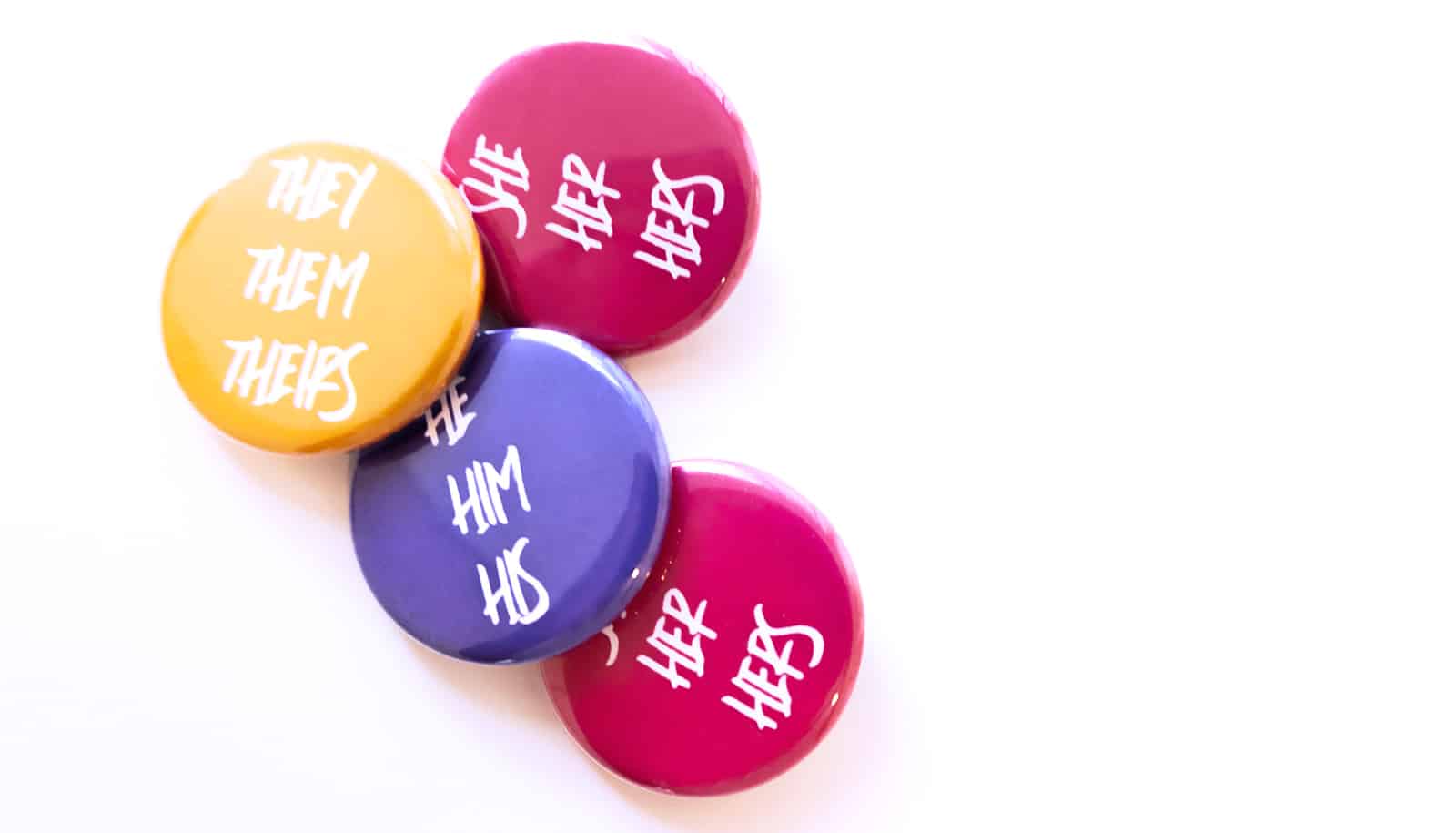Trans and gender nonconforming patients respond positively to physicians and health care providers who wear a pin signaling their own pronouns but don’t verbally provide or request them, a study suggests.
Those patients reported they would be more apt to consider coming back to the provider and would feel a greater sense of satisfaction after their visit.
These findings could help overcome barriers found in prior research, which indicates fewer trans and gender-nonconforming individuals head to the doctor for regular screenings, and others delay care when needed—sometimes out of fear of receiving unfavorable treatment or discrimination.
“It’s been shown across research literature that even small barriers translate into people not seeking care,” says Helen Colby, study coauthor and assistant professor of marketing at Indiana University’s Kelley School of Business in Indianapolis. “If a patient doesn’t have a good experience with a physician, they are far less likely to seek out care again soon. This can lead to lack of regular treatment and monitoring, which has been found to contribute to health disparities in the LGBTQ+ community.”
According to research by the Center for American Progress, 23% of trans participants said they had delayed or skipped preventive medical screenings in the past year out of fear of receiving unfavorable treatment or discrimination. Another 17% said they skipped out entirely. Roughly 30% of the LGBTQ+ community does not have a regular healthcare provider or seek care less frequently.
Colby and her coauthors used online surveys to examine what steps allow for the best experience for all in the health care setting. The study, published in Medical Decision Making, found patients are more likely to have a positive response to health care providers when small interventions are used to signal a commitment to gender inclusivity on the part of the provider.
The authors performed three studies asking more than 950 respondents about their satisfaction with and willingness to return after a health care encounter. They used two methods of provider inclusivity signaling: (1) verbal sharing of the provider’s pronouns and requesting the patient’s pronouns and (2) the provider wearing a pin indicating their pronouns.
These studies were hypothetical scenario studies completed online with satisfaction results asking the responded to rate the likelihood of making an appointment with the provider, satisfaction with the visit and the doctor, and likelihood of returning to the provider in the future. Each study included questions of political orientation, age, gender, education, and household income.
The three studies showed that providing and verbally requesting pronouns, which has been suggested by previous literature as a method of promoting gender identity inclusivity, has a different effect on satisfaction and willingness to visit the health care provider depending on political orientation and can result in problematic backlash, including aggressive responses among some groups. This has significant ramifications for how to promote gender identity inclusivity in health care settings, as a general recommendation to provide and request gender pronouns is likely to alienate more traditional patients and possibly cause them to stop seeking medical care altogether.
“My colleagues and I discovered a more neutral way to signal inclusivity that is relatively simple for those providers who want to show their support,” says coauthor Tony Stovall, clinical associate professor of marketing. “As people become more comfortable with these questions being asked in a health care setting, we can begin to break down barriers to understanding why inclusion allows patients to feel seen and heard, which, in turn, allows for more transparency between doctor and patient.”
The results of the study provide some direction. When the provider was shown wearing a pin indicating their pronouns but did not verbally provide them or request the participants’ pronouns, non-cisgender participants reported greater satisfaction and willingness to return. This benefit was achieved without the backlash found when pronouns were requested explicitly.
“More subtle signaling, like the pins, could be a good way forward for providers who want to signal inclusivity but aren’t sure how to do it. It’s simple, cheap, and feasible, and it doesn’t seem to inspire the kind of backlash other methods may cause. As such, you get the good by including certain groups without the unwanted outcomes of excluding others or causing patient aggression that may negatively impact staff,” Colby says.
In the third study examining only the effect of the doctor wearing a pronoun pin, non-cisgender participants rated the health care encounter and were asked: Why are you likely or unlikely to see this provider again? Of the 92 participants who saw a doctor wearing a pronoun pin, eight explicitly mentioned the pin in their answers, indicating a direct impact of the pin on satisfaction and willingness to return. For example, one participant noted, “[The doctor] seems to be a sensitive person who cares about his patients’ welfare, as judged by his pronoun badge.” Another shared, “The cute pin on his coat was nice. It would probably make me more open and honest about what is wrong. I have a tendency to lie to doctors.”
Source: Indiana University



